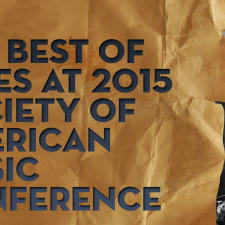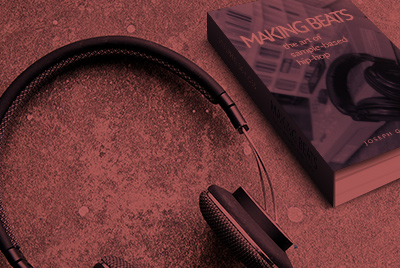Black Music Month, Day #20
Contemporary gospel, a sub-style of the black gospel music genre, has its roots in the style’s insatiable
proclivity for absorbing and re-contextualizing the conventions of multiple genres. One can observe this cross traffic from the very beginnings of gospel’s recognized emergence some eighty years ago in Chicago. The shared formal conventions of blues and gospel made them sonically connected in time, timbre, and force. Gospel’s recognized “father,” Thomas A. Dorsey made his career as a blues performer before making a name for himself as a pianist and prolific songwriter in the genre. And Mahalia Jackson, easily the music’s first “superstar,” confessed to being stylistically indebted to blues singer Bessie Smith. Yet given the black church’s body of innovators, musical entrepreneurs, charismatic personalities, and profound influence in many social and cultural matters in Afro-Americana, one can easily argue for gospel music’s influence over secular forms as well.
The tensions created by the audibly obvious connections and the heated public battles about their socially assigned “sacred vs. secular” meanings have been, I would argue, part and parcel of their appeal, a locus of their pleasure. Indeed, the overwhelming popularity of Dorsey’s and Jackson’s “blue spirituality,” the jazz experiments of guitarist Rosetta Tharpe in the 1940s and 50s, and the adoption of R&B and pop styles in the late 1960s’ of the Edwin Hawkins singers Family, and the polished soul of the Winans in the early 1980s—to name just a few examples—provide evidence of the secular world’s unabated appetite for these blends. The most recent iterations of gospel’s “will to blend,” then, are part of such a long and consistent history that one must consider them but the latest evidence of the genre’s modus operandi, it’s fusion aesthetic, if you will. And I have discussed in another place how both hip-hop and gospel muses share this fusion aesthetic, this will to blend.
I’d like to speak briefly here to this aesthetic principle in the work of Karen Clark Sheard. Because gospel music has remained a province of female mastery, I think it is useful to consider the performance rhetoric of this uniquely female-dominated creative space as linked indelibly to the notion of women’s work: their labor as canon builders, as culture bearers, as innovators and leaders. What emerges, then, is a larger picture of how social history governs the creation and reception of music meaning; yet in the present case, these histories are animated and materialized within the discourses of individual, technical, and spectacular music masteries (sometimes referred to as “genius”). Rather than view this genius as the result of “natural talent,” (or even “extravagant religious emotions” as one historical actor called performance in the black church) we might think about it better as the result of intellectual work—as conscious artistic choices grounded both in an engagement with African American cultural history and in contemporaneous styles.
The close readings of contemporary gospel music follow my plan from earlier work for black music criticism that, first, identifies a song’s most significant musical structures and gestures. Then those soundings are positioned within a broader field of musical rhetoric, conventions, and social contracts that we think about as “genre.” Lastly, I theorize all of these observations with respect to grand systems of cultural knowledge such as historical and geographical contexts, etc., as well as the lived experiences of audiences, composers, performers, and dancers.
Karen Clark Sheard, whose performance I analyze here is the youngest of the Clark Sisters, a group hailing from Detroit, Michigan and who have been one of the most endearing and enduring contemporary gospel groups of the last thirty years. Their fans and colleagues consider them musically exceptional: their songwriting and spectacular singing abilities coupled with a commitment to the gospel genre have inspired the awe and affection of legions of fans, both inside the church and without. They are considered to be the gold standard of gospel music performance and the best at what they do. Their trademark embrace of contemporaneous secular styles, their profound impact on secular music, their collective and individual improvisational abilities, and their steadfast adherence to central stylistic markers of traditional gospel allow for a fascinating look at contemporary gospel as an expressive practice.
Samuel A. Floyd, Jr. provided us in the early 1990s a sonic roadmap for identifying “black” musical rhetoric. Derivative from the singing sonic world of slave culture, his template comprises the constant use of the following, among others qualities:
Ø Calls, cries, hollers, whoops, hums, moans, groans, oral declamation
Ø Melismas (many notes on one syllable)
Ø Riffs (short repeated melodic phrases)
Ø Moving from speaking to singing mode
Ø Endless improvisation
Ø Repetition in the melodic, harmonic, and rhythm parameters
There are many more of conceptualizations in Floyd’s theory to which I would add here Olly Wilson’s notion of the heterogeneous sound ideal—the idea that a mosaic of timbres saturate typical black vernacular “musiking” from top to bottom.
Clark-Sheard, the singer under consider here, exploits these qualities as foundational to her rhetoric. She also prioritizes the mashing of genres—blues, gospel, jazz, R&B—to maximum effect. Near the end of the clip she demonstrates a technique in which she imitates an echo effect, a move that calls attention to (rather than obscures or naturalizes) her microphone technique. One might interpret this move as connected to hip-hop era provocative and transparent uses of technology, and not to mention a nod to another genre.
The following clip was taken from a live performance event of gospel producer Donald Lawrence’s group, The Tri-City Singers. During the reprise, a number of virtuoso singers in the audience are asked to “blow a little” during the vamp, to make the song their own, to encourage the audience through extemporaneous exhortation. Sheard’s contribution is a marvel in its rhetorical density. I’ve tried to capture some of it with the key below ascribing symbols and various fonts to her various techniques. Executed in the context of an 8-bar cyclic progression, her improvisation shows a mastery of how to manage the emotional teleology of the six broad sections charted.
Section 1 is the set up, comparatively subdued. Section 2 brings in a higher vocal range coupled with more rhetorical excess. The next section, the most dramatic, is sung against the choir’s added background and gives the section a “shout chorus” feeling ala 1930s big band music. While Sheard’s textual improvisation depends on stock phrases from black church rhetoric during this section, musically she compresses loads of dynamism through melisma, timbral shading, range, and note choices. Section 4 presents a “riff fest” in which the singer uses the ideal of repetition with a difference—each phrase, though similar in text, features different pitch sets. She creates what might be called “self-reflexive call and response” with her own interpolations. When she jokingly during this section apologizes to Donald Lawrence for seemingly being in the process of tearing the roof off the auditorium, she uses “meta song text,” a way of momentarily stepping outside the standard convention of address in the “song” to make commentary on the proceedings. Section 5 moves in and out of speech and melodic mode, setting the table and drawing the audience in for the next passages, in which she sonically represents the divine. And indeed in the last section her echo effect portends to speak from the heavens to the listeners present—“you’re not alone.”
Hold onto your seats. Here comes Karen, mastering and taking no prisoners. And she’s really not sorry about it.
KEY:
^^^^^^^^^^^ = dramatic melisma
bold, large font = harmonic upper extensions and dissonance
italic = rhetorical riff-based repetition
strikethrough = squall/growl
large font = melisma on single word
( )=meta song text
1.
- It’s your time
- It’s your time
- Oh-oh-oh-It’s your time
- Oh^^^^^^^^^^^^^^^
2.
- It’s your time
- Oh, you might have to cry sometime
- Oh,^^^^^^^^^^^^^^^^^^^^^
- It’s your time, it’s your time , Oh^^^^^^^^^^^
3. [Choir sings “it’s your time” in 3-part harmony]
- You might have to cry sometime
- Oh, he might not come when you want him
- But, oh-oh-oh, he’s right on time
- Yeah, oh, it may look a little dreary
- Oh, it’s not over, ‘til God says it over
- It’s not over—^^^^^^^^^^^^^^^^^
- It’s your time—yeah-oh-oh-oh-oh-oh-oh-oh
- Your time
4.
- It’s yo-yo-yo-yo-yo-yo-yo-yo-yo-yo time
- Hmm- it’s yo-yo-yo-yo-yo-yo-yo-yo tme
- (I’m sorry Donald) it’s yo-yo-yo-yo-yo-yo-yo-time
- Yeah-yeah-yeah–it’s yo-woawoa-woa-woa-woa-woa-woa-yo time
5.
- And then when you get down on your knees and pray
- And it feel like you’re all alone
- But God will come in a little small voice like this
- And he’ll say
6.
- You’re not alone (echo effect)
- Yeah-yeah-yeah
- You’re not alone (echo)
- Oh-whoa-oh-oh (echo-elided)
- Yeah–yeah-yeah—(echo)
- Yeah-yeah-yeah
- Oh-ba-ba-ba-oh-ah—(echo)
- Yeah-yeah-yeah-yeah-yeah
Tags: contemporary gospel music, Donald Lawrence, Gospel Music, karen clark sheard, Mahalia Jackson, Olly Wilson, Samuel Floyd, The Clark Sisters, Thomas A. Dorsey






 Share On Facebook
Share On Facebook Tweet It
Tweet It





